Blog
HBCU STEM Pathways
November 12, 2024 Most students are aware that the acronym STEM stands for Science, Technology, Engineering, and Mathematics, however, few students have been introduced to the range of careers that fall within each of these categories. Healthcare careers, which also fall under the broad category of STEM, are addressed separately in Vol II of this series, HBCU Healthcare Pathways. In that book, The National Center for Health Workforce Analysis, “State of the U.S. Health Care Workforce, 2023,” profiles the underrepresentation of Blacks in the healthcare workforce where Blacks represent only:
Most students are aware that the acronym STEM stands for Science, Technology, Engineering, and Mathematics, however, few students have been introduced to the range of careers that fall within each of these categories. Healthcare careers, which also fall under the broad category of STEM, are addressed separately in Vol II of this series, HBCU Healthcare Pathways. In that book, The National Center for Health Workforce Analysis, “State of the U.S. Health Care Workforce, 2023,” profiles the underrepresentation of Blacks in the healthcare workforce where Blacks represent only:
- 13.7% of Nurses
- 5.3% of Physician Assistants
- 4.1% of Dentists
- 4.1% of Physical Therapists
- 2.7% of Chiropractors
- 1.9% of Pharmacists
- 1.5% of Veterinarians
Similarly, the National Center for Science and Engineering Statistics’ 2023 report, “Diversity and STEM: Women, Minorities, and Persons with Disabilities,” profiles the underrepresentation of Blacks across the science, technology, engineering, and mathematics workforce where Blacks represent only:
- 9% of Scientists & Engineers
- 6% of Social and Related Scientists
- 6% of Computer and Mathematical Scientists
- 4% of Biological, Agricultural, and other Life Scientists
- 4% of Physical and Related Scientists
Whether you are reading this book because you are considering a college major in STEM or exploring potential careers in STEM, this book will provide insight into both the obstacles and opportunities through HBCUs into graduate school or into the workforce. Whatever obstacles experienced by students in K-12 schools, HBCUs have a history of successfully preparing Black students for careers in STEM. Dr. Claudia Rankins, Program Director at the National Science Foundation, in “Historically Black Colleges and Universities (HBCUs): NSF’s Role in Building Capacity for STEM Education and Research,” reports that while HBCUs only enroll 9% of Black undergraduate students, they graduate:
- 29.9% of Black students in Agriculture
- 27.8% of Black students in Physical Science
- 25.5% of Black students in Mathematics
- 24.7% of Black students in Biological Sciences
- 17.2% of Black students in Engineering
The underrepresentation of Blacks in STEM careers has far reaching implications for families and communities. Rakesh Kochhar and Mohamad Moslimani in “Wealth gaps across racial and ethnic groups,” note the huge gaps in wealth and homeownership between racial groups.
Average Household Wealth by Racial Group:
- Asians – $320,900
- Whites – $250,400
- Hispanics – $48,700
- Black – $27,100
Percentage of Home Ownership by Racial Group:
- 70% of Whites own their home
- 58% of Asians own their home
- 47% of Hispanics own their home
- 40% of Blacks own their home
Increasing household wealth and expanding homeownership can be profoundly impacted by attaining an undergraduate degree in virtually any STEM career. The Georgetown University report, “The College Payoff: Education, Occupations, Lifetime Earnings,” (Carnevale, Rose, & Cheah, 2011) estimates lifetime earnings for an undergraduate degree is between $2 million and $4 million in all of the following STEM careers:
- $4 million – Pharmacists
- $3.9 million – Aircraft Pilots & Air Traffic Controllers
- $3.7 million – Computer & Information Systems Managers
- $3.6 million – Software Engineers
- $3 million+ – All Engineers
- $3 million – Computer Scientists & Programmers
- $2.8 million – Architects
- $2.5 million – Registered Nurses
- $2.3 million – Agricultural, Biological, and Life Scientists
Whether or not you believe that a career in STEM is the right career for you, this book will provide guidance in exploring these careers, salaries for these careers, level of education required for these careers, the type of college curriculum associated with these careers, HBCUs considered leaders in preparing students for these careers, and how to match your interests to potential career pathways.
Study Skills and Learning Strategies
November 12, 2024 Whatever career or college pathway you choose, you must study as part of the learning process. However, “studying” and “learning” are different. Yet, doing both well is essential to whatever your chosen career or college pathway.
Whatever career or college pathway you choose, you must study as part of the learning process. However, “studying” and “learning” are different. Yet, doing both well is essential to whatever your chosen career or college pathway.
What is Studying?
Studying means “to read, memorize facts, attend school, etc., as part of the process of engaging in intentional efforts to acquire knowledge.”
What is Learning?
Learning means “to develop the ability to recall information from memory and apply
to new situations.”
Like pursuing a career, learning how to study and learning how to learn will require work. Whether you aspire to become an auto mechanic or a heart surgeon, both require that you develop successful study routines and learning strategies. The same is true of whether you plan to enter the workforce, enlist in the military, or enroll in college after high school. This book can help you develop a planned approach to studying that will help you to become a better learner.
If you are not interested in learning about the research supporting the study skills and learning strategies being presented, then choose whatever study routines and learning strategies you believe will work best for you and begin experimenting. Whether you want to become a better student in a class, learn how to achieve a higher ACT or ASVAB score, or learn how to repair an engine or fly a drone, studying and learning are essential to your success.
You must commit. Pursuing a career or college pathway requires that you make a commitment to studying and learning. Whatever your current grades or test scores, every student can benefit by becoming a better learner. Even medical school students discover that both, making it into and through medical school, requires that they become better learners.
If you are an athlete, consider this as your playbook. If you are a chef, consider this as your recipe book. If you are an automotive or diesel mechanic, consider this as the manufacturer’s repair manual. Whatever career or college pathway you are pursuing, you will need to study and learn—this book can help you to do both better. Throughout the book are links to videos to further assist in identifying, understanding, and implementing the study skills and learning strategies that work best for you.
There are 3 components of learning (illustrated on the following page):
- Encoding: how you receive information.
- Retention: how you retain or store information.
- Retrieval: how you retrieve or recall information from memory to apply to a situation such as solving a problem, demonstrating a skill, or answering questions on a test.
There are 3 times in which learning occurs:
- In the moment: when a teacher, parent, or career instructor is talking.
- In your own time: when you are studying a subject or practicing a skill.
- When demonstrating what you know: when baking a cake, repairing an engine, driving a truck, flying a drone, playing an instrument, making a presentation, or taking a test.
Your actions during the times in which learning occurs determines how easily information is received (encoded), retained (retention), and will later be recalled (retrieval) from memory. The strategies provided in this book will require effort and are intended to be difficult. University of Pennsylvania Professor Angela Duckworth, developer of the grit scale, describes this process as “Effortful Learning.” UCLA Professor and cognitive researcher, Robert Bjork, describes this process as “Desirable Difficulties.” These two processes relate to all learning, whether in a classroom, computer lab, music studio, or truck driving course. Strenuous athletic workouts develop skills, increase endurance, and build stronger muscles. In the case of learning, effort and difficulty build stronger memory pathways through each of the 3 stages of encoding, retention, and retrieval resulting in deep levels of learning and fast retrieval of information.
Why Attend an HBCU
November 12, 2024 The fundamental principle in which this, and the other books in the Why Attend an HBCU series are written, is the adage,
The fundamental principle in which this, and the other books in the Why Attend an HBCU series are written, is the adage,
Give someone a fish, and you feed them for a day.
Teach someone to fish, and you feed them for a lifetime.
To teach someone to fish, the teacher must be knowledgeable about the “process” of fishing. To keep from starving, the student must be willing to both learn and apply the process. Teaching a process to someone follows the principle of “backwards mapping,” which means to begin with the end in mind, i.e., not starving. With not starving as the end goal, the process evolves from working backwards to plan how you will catch fish. In regard to attending an HBCU, or any college, if the goal is avoiding student loan debt, then working backwards requires developing a set of strategies for identifying, applying, competing, and receiving enough scholarship money to close your financial aid gap, thereby avoiding student loan debt.
The fact that 80 percent1 of students enrolling in HBCUs are using student and Parent PLUS loans to pay for college, suggests that the majority of students attending HBCUs are not being taught how to pay for college. There is an important distinction between students who ask “Where do I get scholarships?” versus “How do I get scholarships?” While this may appear to be a matter of semantics, it is far from it. The person who asks, “Where do I get a fish?” is asking a very different question than the person who asks, “Can you teach me how to fish?”
Collectively, the books in the Why Attend an HBCU series provide comprehensive guidance in matching to the right HBCU and the right scholarships. While you will be introduced to many scholarships throughout this and the other books in the series, the purpose is not to give you a comprehensive listing of all available HBCU scholarships, but to teach you how to identify, apply, compete for, and be awarded enough scholarship money to avoid student loan debt. Fully benefiting from the information being presented requires a level of intellectual curiosity driven by seeking answers to such important questions as:
- Which school or program is the right fit for my educational and career aspirations?
- Which schools are the right fit for my financial need?
- Which schools are the right fit for my unique situation and circumstances?
- Which scholarships are the right match to my body of work?
These are only some of the many questions to be asked and answered in identifying the schools that are the right fit for earning a 4-year degree to enter into the workforce or in preparation for attending graduate school, nursing school, dental school, medical school, or law school.
While HBCUs share many commonalities, they are no more homogeneous than is the Black community. They represent public and private institutions. Public institutions rely primarily on funding from state legislatures and are governed by boards appointed by the governor of the state in which the school is located. Private institutions tend to be smaller and more personalized. Some schools guarantee on-campus housing for all four years, while other schools only guarantee on-campus housing for first-year students (or students from schools/states with transfer agreements). Some schools have a huge focus on athletics, other schools less so. Some schools have a long history of producing students who go into STEM, while other schools have a long history of producing students who go into education.
Admission rates at HBCUs also widely vary. While the acceptance rate at Alabama State University is 97 percent, 42 miles away, the acceptance rate at Tuskegee University is only 30 percent.2 Similarly, the acceptance rate at Morgan State University is 85 percent, 678 miles away, the acceptance rate at Spelman College is only 28 percent.3 Collectively, the books in the Why Attend an HBCU series provide guidance in researching HBCUs and identifying the schools, programs, and campus communities that represent the best match to your educational and career aspirations, and provide the best opportunities to meet your financial need. The information spans across 7 areas:
- The historical significance of HBCUs, as well as their current role in combating the assault on truth and facts, particularly as they pertain to African and African American history.
- Scholarship opportunities that are supportive of, or unique to, attending an HBCU (institutional, corporate, and private).
- The range of opportunities available through an HBCU into the workplace or in preparation for graduate school, nursing school, dental school, medical school, or law school.
- How to research schools, majors, and their relationships with employers in various career fields.
- The concept of “body of work” and its role in maximizing a student’s scholarship, internship, research, or graduate school opportunities.
- Financial literacy of students and parents in understanding college costs and the burden of assuming student and Parent PLUS loan debt that may take a student’s entire working life to repay and deplete a parent’s wealth accumulated over the course of their entire working life.
- Successfully applying for scholarships is part of a process supported by a high quality self-presentation (i.e., résumé/CV, email signature, cover letter, recommendation letters, well written essays) resulting in the submission of “high quality” applications.
The information provided in each of these 7 areas will prove invaluable for the student who is looking beyond being offered admission to a particular HBCU to identifying scholarships, being a competitive candidate for internships, developing networks with HBCU alumni throughout the public and private sectors, and taking advantage of the many partnerships between the United Negro College Fund,4 Thurgood Marshall College Fund,5 and hundreds of companies offering scholarship, mentorship, and employment opportunities.
While attending an HBCU can provide a welcoming space and certainly one that enriches the “Black experience,” it can also serve as a launching pad for graduate school, nursing school, dental school, medical school, law school, and employment opportunities uniquely available to HBCU students. After being introduced to the plethora of opportunities available to HBCU students, the forward thinking student will look beyond getting admitted and begin building the type of résumé or curriculum vitae (CV) that will make them a competitive candidate for these opportunities.
HBCU Scholarships
November 12, 2024 This book supports the Why Attend an HBCU series. As Sydnee wrote in A Student’s Perspective, there are many educational and scholarship opportunities available at HBCUs for students who are willing to invest the time in researching schools and programs. Unfortunately, most students are driven primarily by either HBCU brand names, schools that are close to home, or applying to multiple schools through the Black Common Application without devoting sufficient time and attention to researching costs or matching to scholarships. The far too common result is students scrambling and parents experiencing anxiety over the costs, AFTER, students have applied to college. The HBCU Facebook Group, “Black, Brown & HBCU Bound,” reflects many such posts by dismayed students and parents:
This book supports the Why Attend an HBCU series. As Sydnee wrote in A Student’s Perspective, there are many educational and scholarship opportunities available at HBCUs for students who are willing to invest the time in researching schools and programs. Unfortunately, most students are driven primarily by either HBCU brand names, schools that are close to home, or applying to multiple schools through the Black Common Application without devoting sufficient time and attention to researching costs or matching to scholarships. The far too common result is students scrambling and parents experiencing anxiety over the costs, AFTER, students have applied to college. The HBCU Facebook Group, “Black, Brown & HBCU Bound,” reflects many such posts by dismayed students and parents:
“My daughter has been applying for scholarships, consistently, but she just isn’t having success. She will be an incoming freshman at Hampton U and has strong stats- 4.0 gpa, 12hrs dual credit, 30 ACT, 200+ service hours, heavy ECs, etc, etc, etc. Her results def got her into the universities she applied to and she has received merit THAT WE ARE TRULY THANKFUL FOR, but there is still a gap we are seeking to close. She’s won a couple of local awards, but the large sums of money that folks often reference have definitely eluded our household. We invested in her k-12 education thinking it would all be recouped at graduation/college. Deep, deep SIGH. I appreciate this space so very much.”
“I am in the same boat as you. My daughter is attending Hampton as well and the same exact things you have said applies to my daughter as well. It’s sad and frustrating.”
The 2024-25 direct costs to attend Hampton University is $44,900. However, this is less than the actual Cost of Attendance after including the costs of books, personal expenses, travel expenses, and health insurance.
“I am the mother of a rising senior (class of 2025)….we live in Texas, and she is ranked in the top 10% of her class with an ACT score of 29, and SAT score of 1300….she plans to retake both next month. Her #1 HBCU choice is Spelman, and her #2 is Howard. She wants to study political science as she wants to be a lawyer. She is very involved in school clubs, student body president, and is doing her 2nd law internship at a local law office. I know the cost of these two colleges is very expensive so I am looking for any advice from someone who has been in a similar situation.”
“My son did receive a merit scholarship however it is not enough. He has been applying for scholarships, but has not received any. Any suggestions? Desperate parent.”
The Howard University website is out of date showing the most recent Cost of Attendance as $52,524 for the 2022-23 academic year. The Spelman College 2024-25 Cost of Attendance is $57,221.
If any of these students are planning to attend graduate school, law school, or medical school, they could enter graduate school with well over $150,000 in student and Parent PLUS loan debt. If you are a student who has already been offered admission to an HBCU, but still find yourself with a significant financial aid gap, this book will expand your understanding of how to become a competitive scholarship applicant, how to identify HBCU-specific scholarships, and how to significantly increase your chances of closing your financial aid gap with multiple scholarships.
If you are a high school student yet to apply to college, this book will help you develop a scholarship plan well in advance of applying to colleges and for scholarships, and provide guidance in matching to the ‘right’ scholarships and the ‘right’ colleges.
If you are a community college student planning to transfer to an HBCU, this book will provide you with similar guidance as if you were applying to college as a first-time freshman, but expanding to incorporate transfer scholarships and HBCU-specific scholarships for which you would qualify based on your transfer status as a first-, second-, or third-year students.
If you are currently attending an HBCU, this book will provide guidance in identifying and applying for scholarships that have been awarded to the many students with whom we guided into an HBCU and continue to guide them through their undergraduate program in preparation for applying to graduate school.
Newsletter: November 1, 2024
November 1, 2024

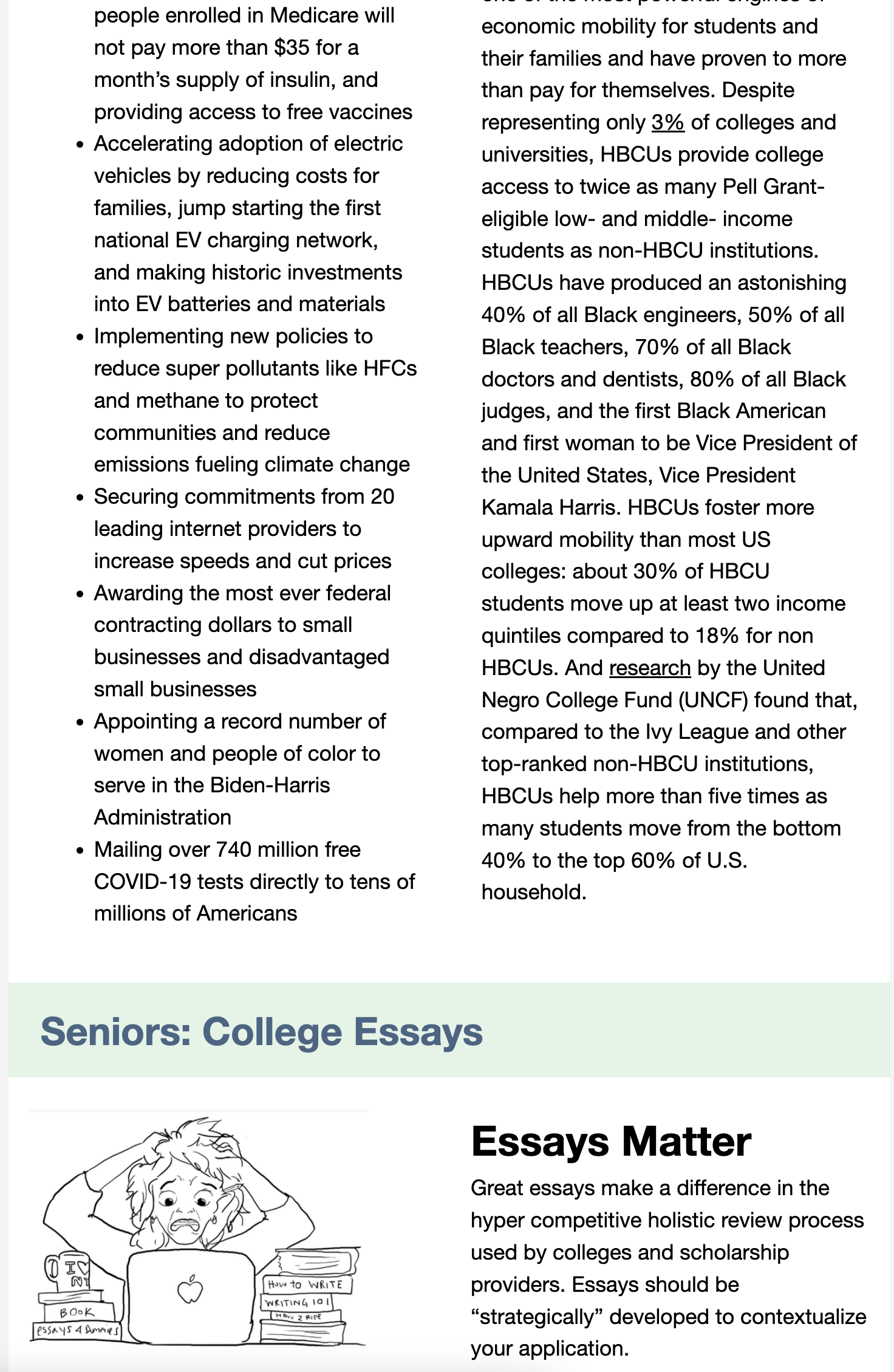
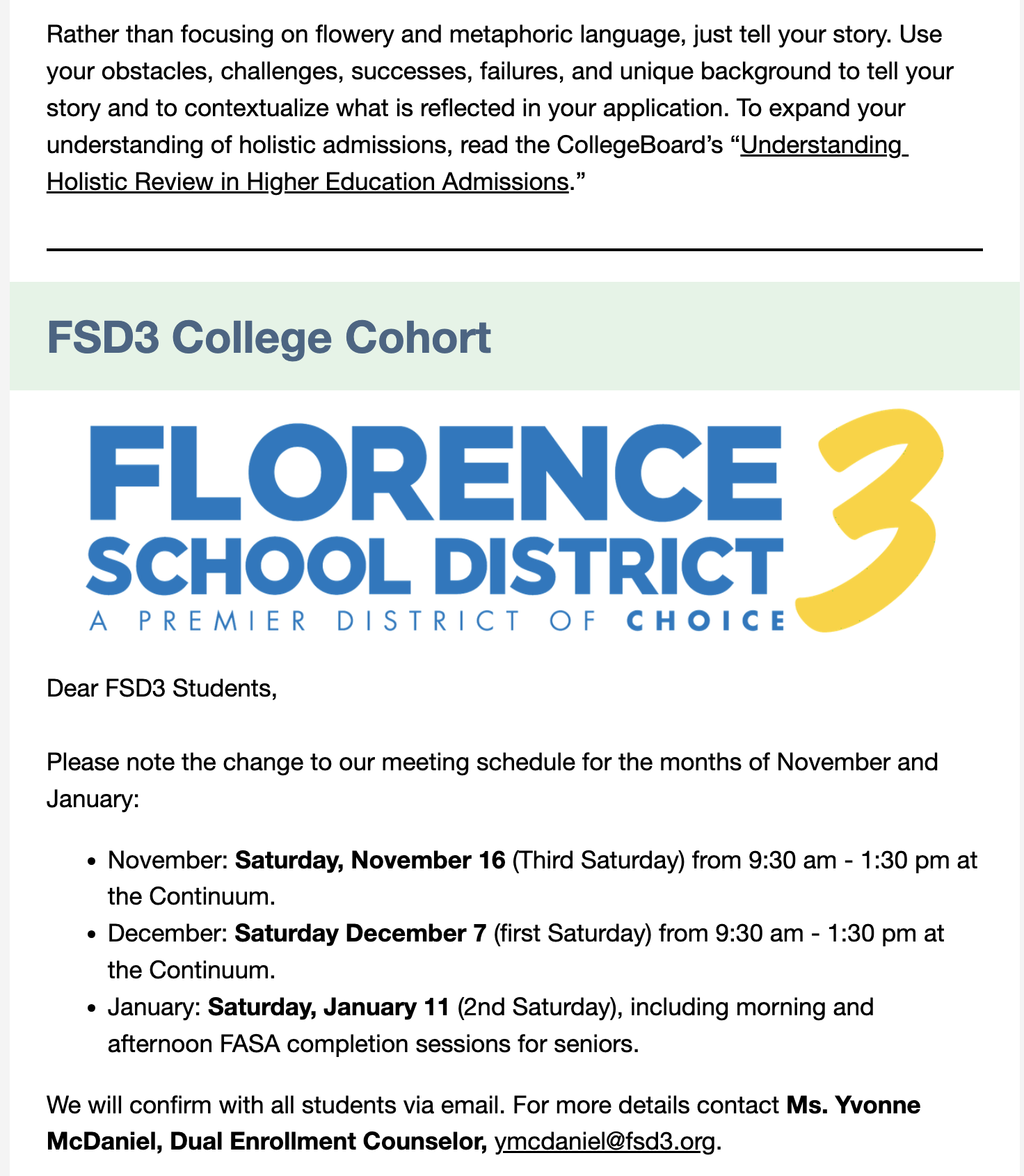



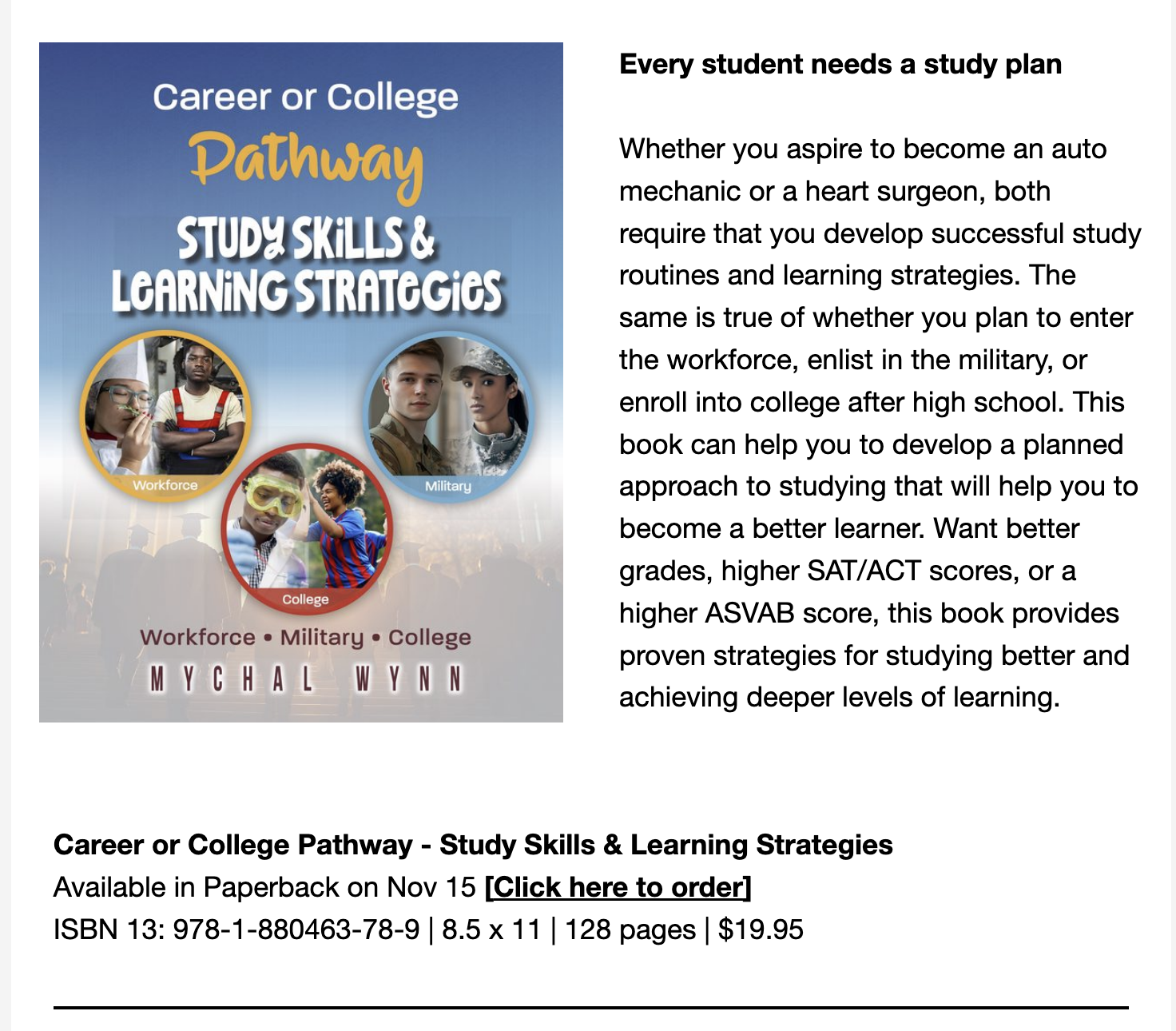
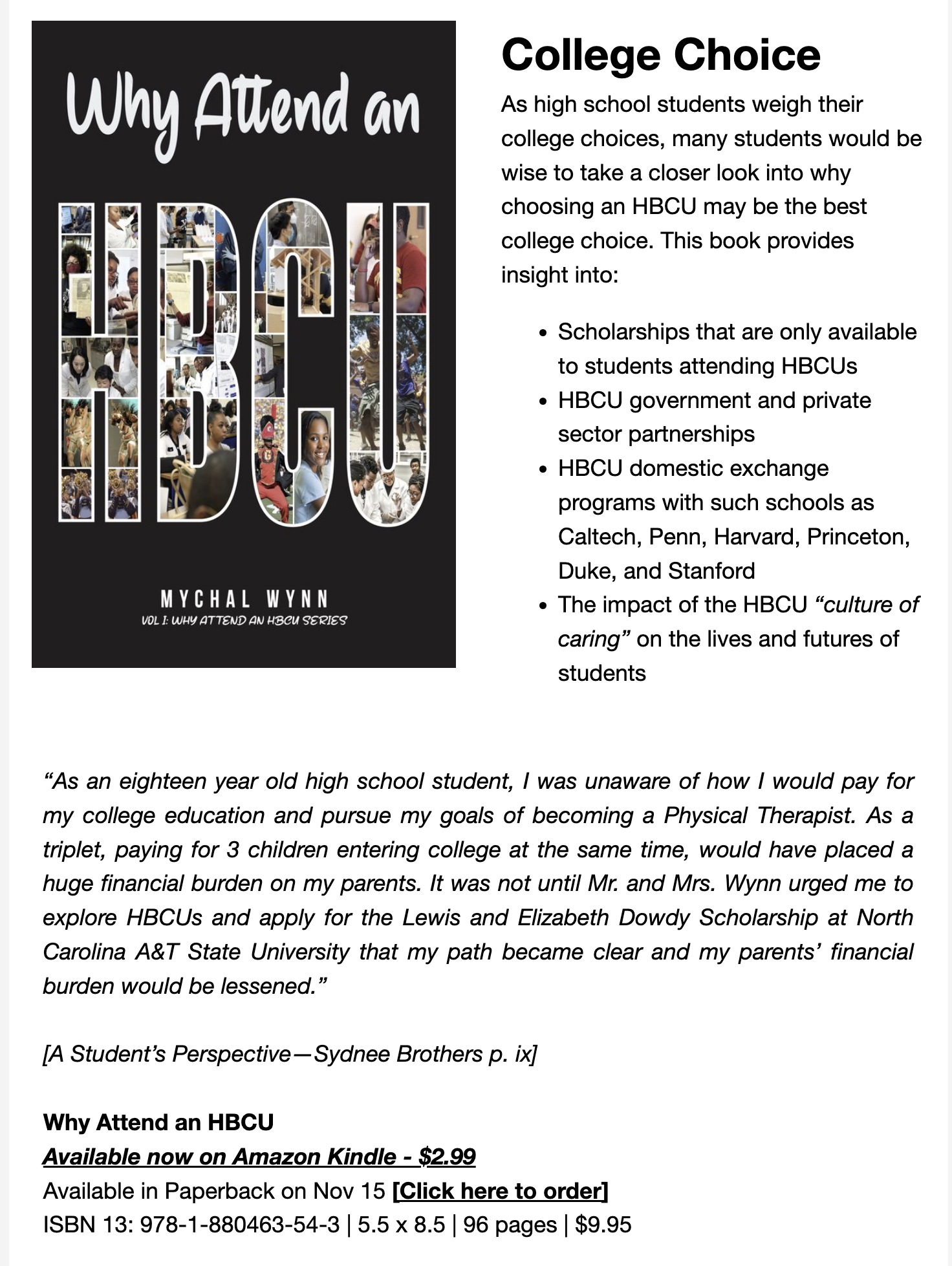

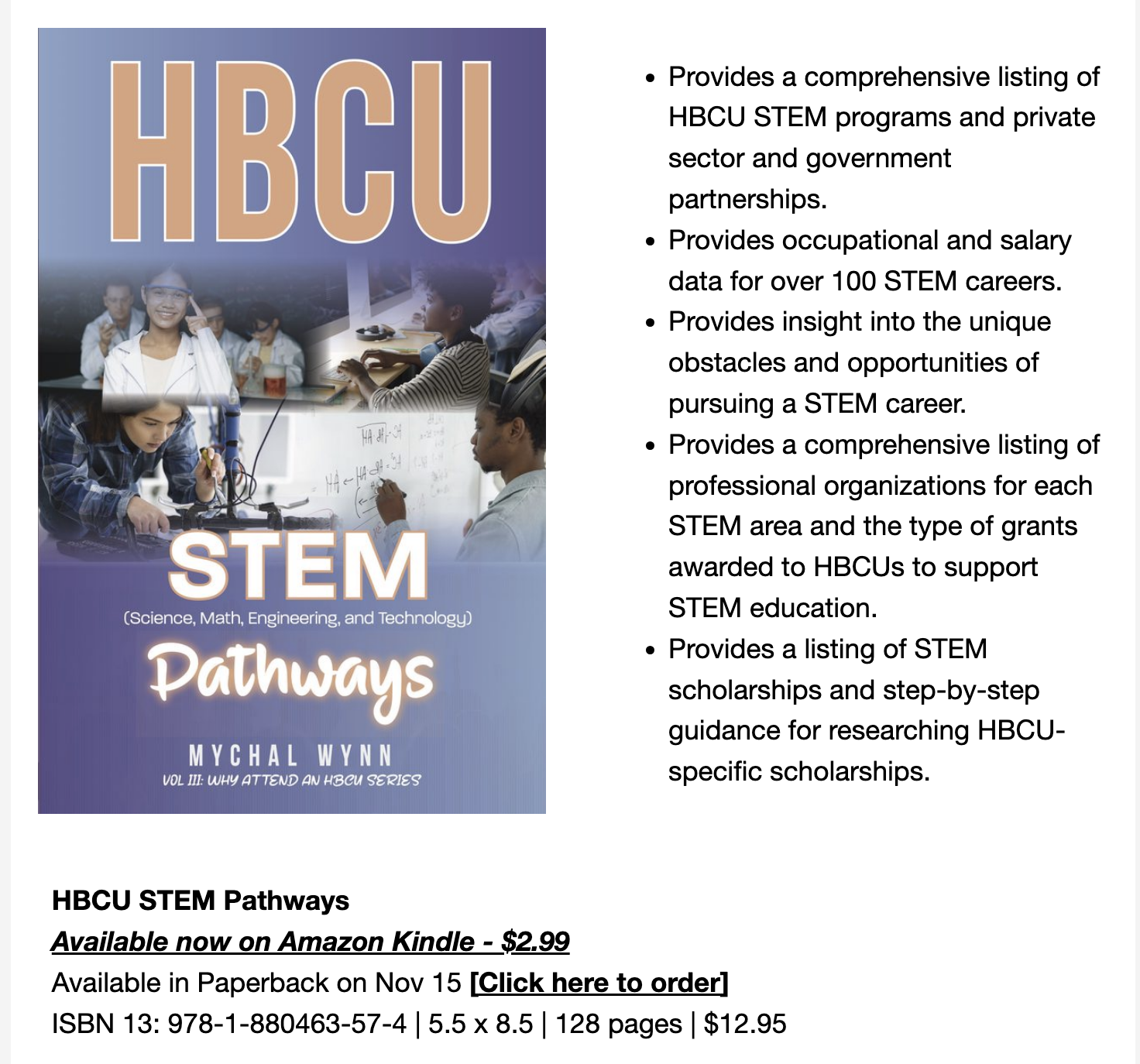
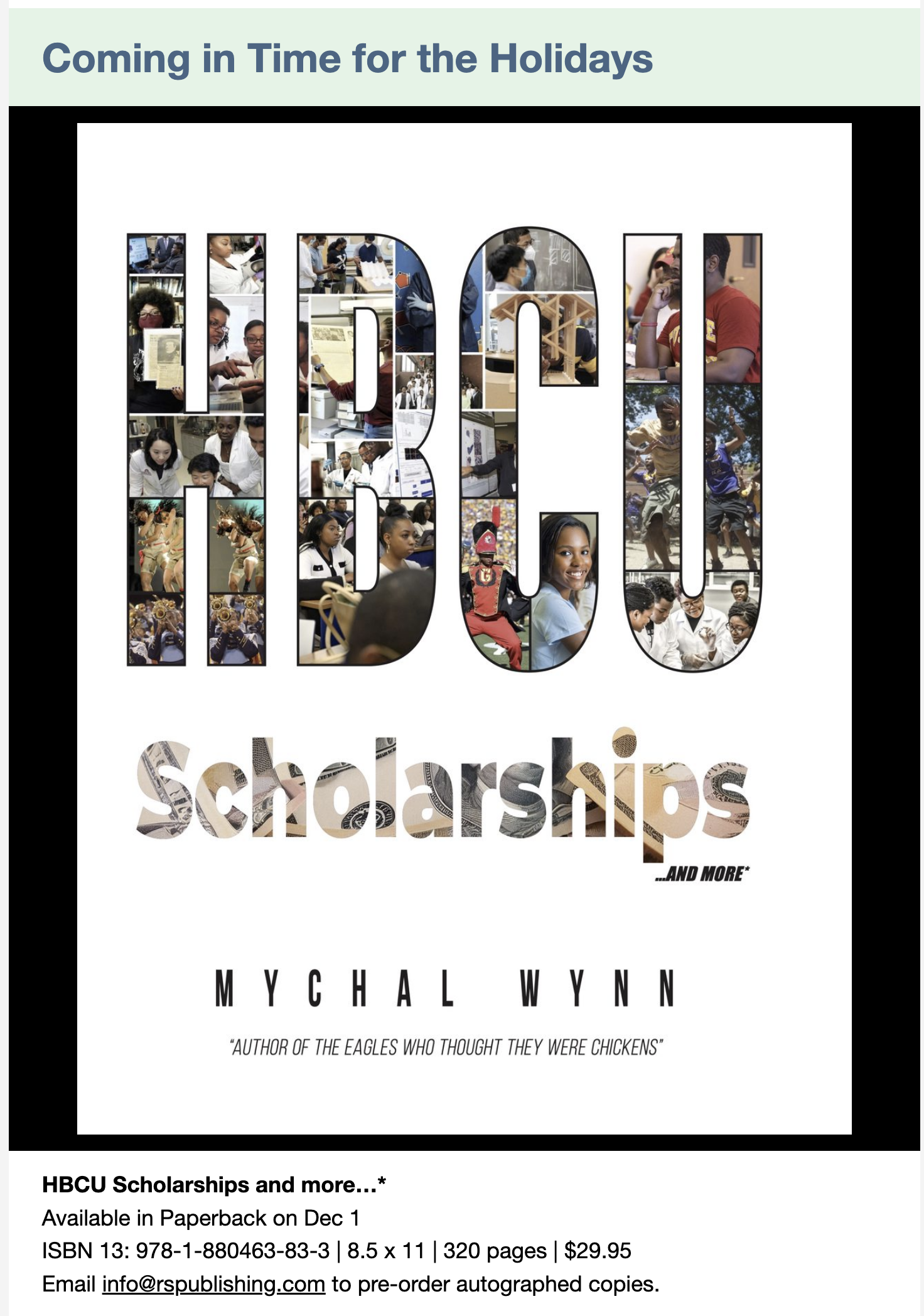
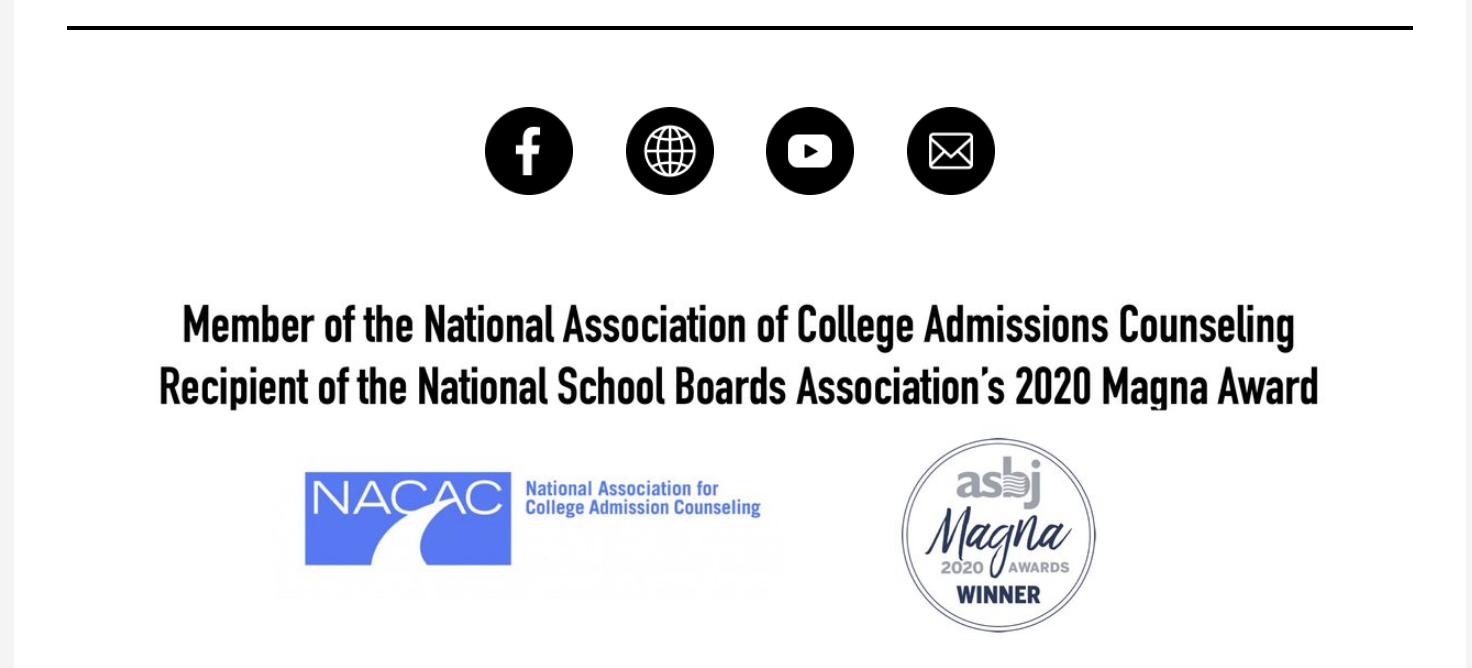
Newsletter: October 1, 2024
October 1, 2024



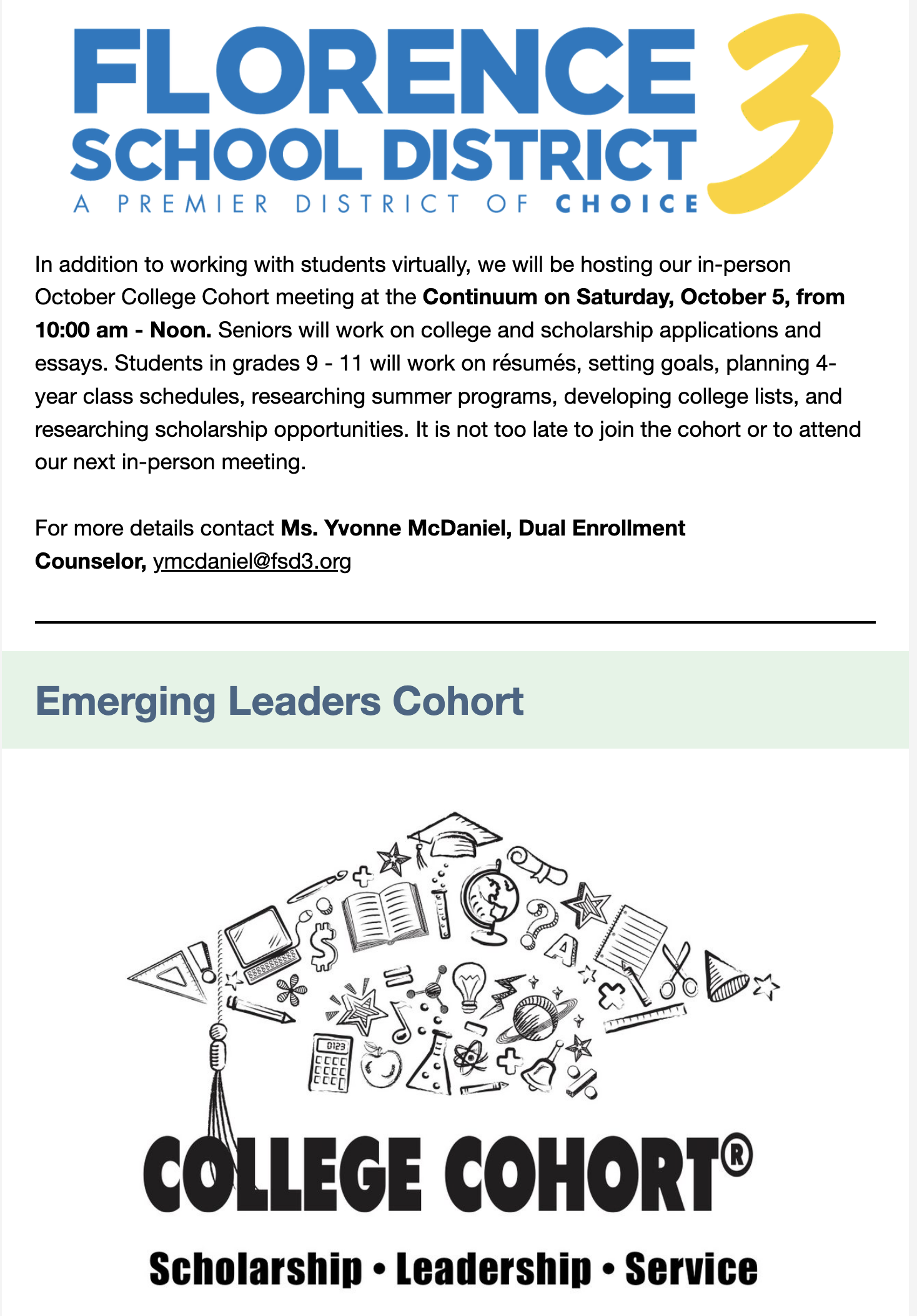

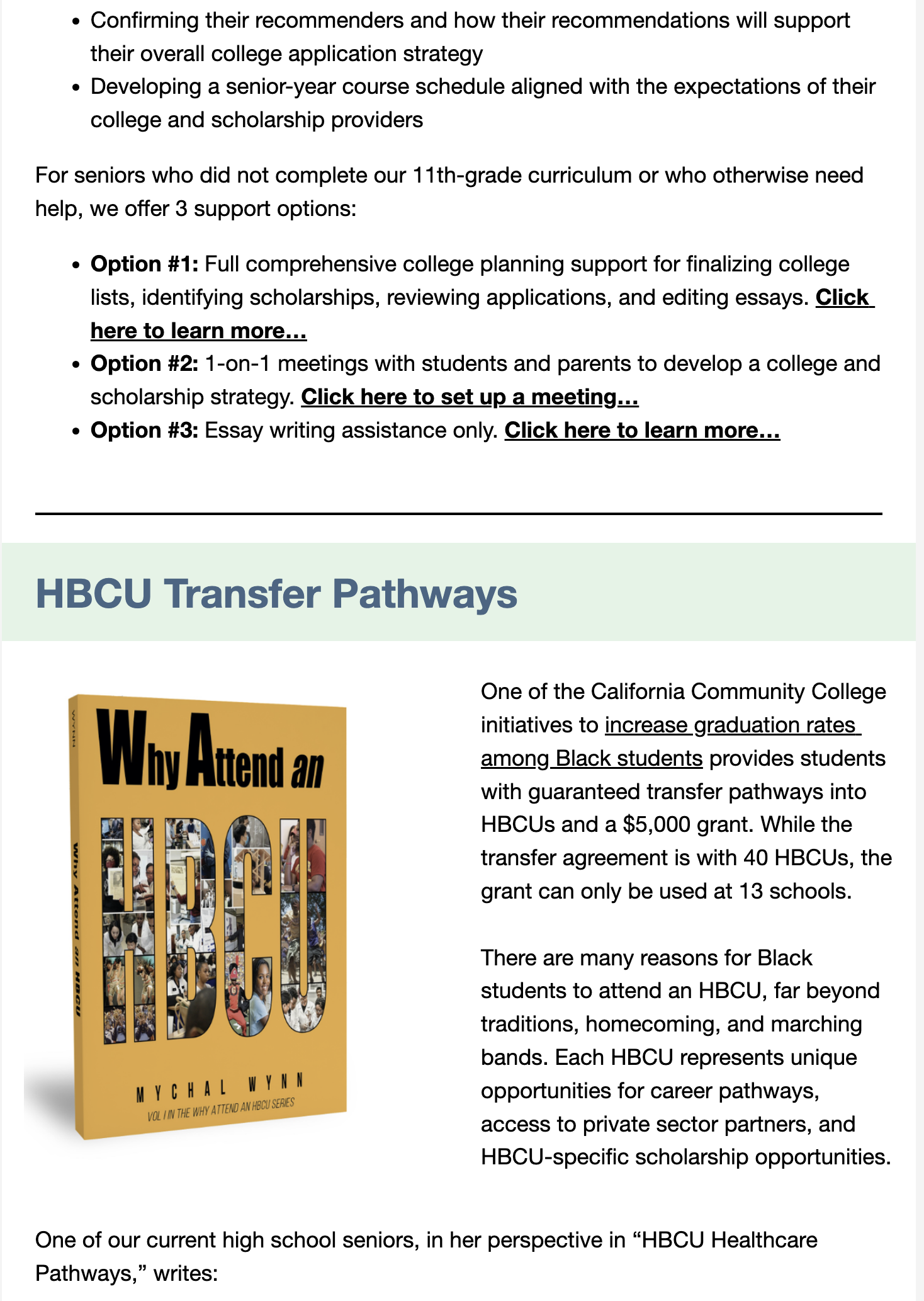
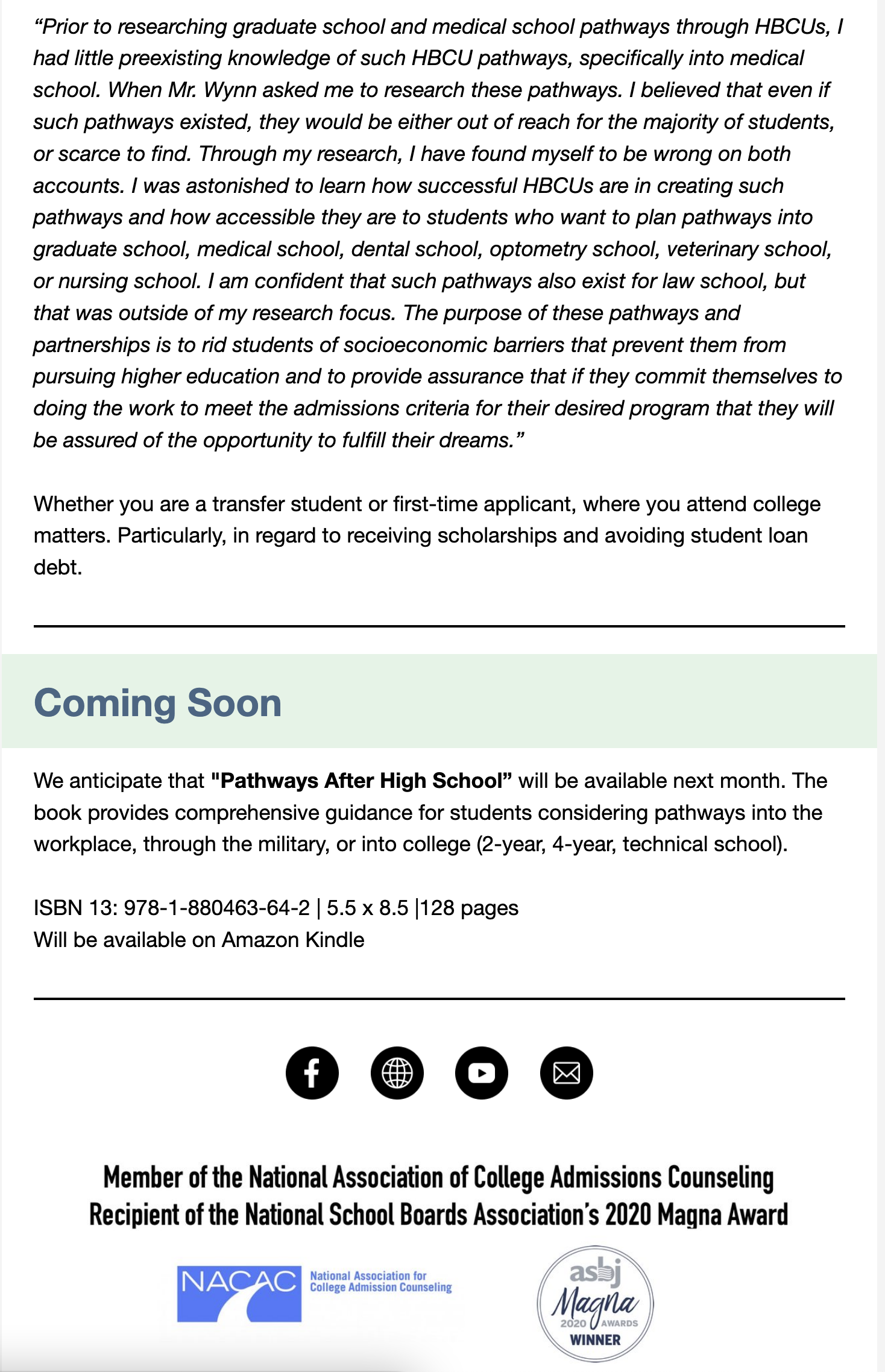
Newsletter: September 1, 2024
September 1, 2024










Newsletter: August 1, 2024
August 1, 2024







Newsletter: July 1, 2024
July 1, 2024

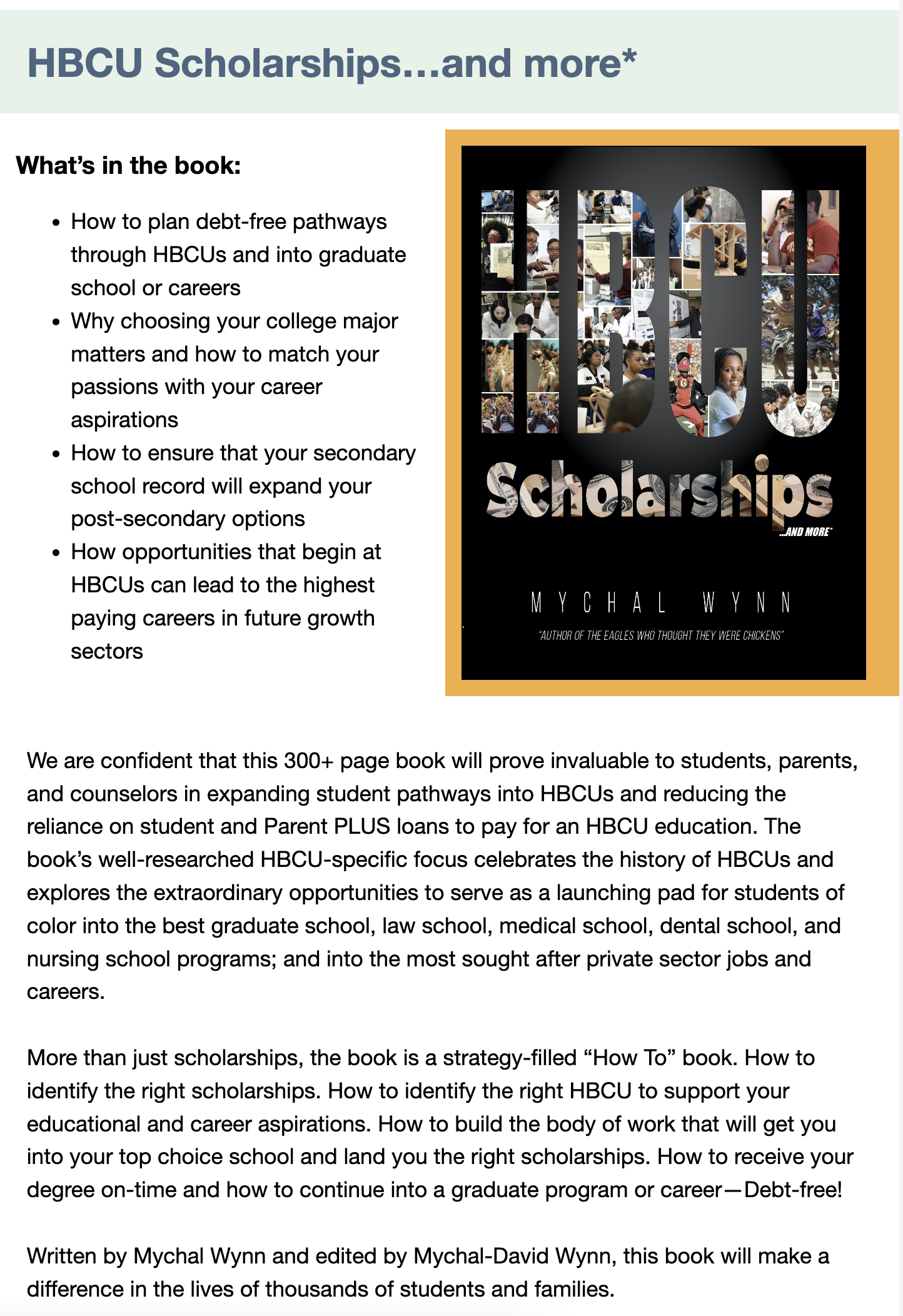









Newsletter: June 1, 2024
June 1, 2024
June 1, 2024
As a community-based organization, our contracts with school districts allow us to offer free college planning guidance to students and parents in our partner school districts. These partnerships have been hugely beneficial for parents and students, expanding postsecondary access and avoiding thousands of dollars in student loan debt. Our partnership with Guilford County Schools (NC) was nationally recognized and awarded the 2020 MAGNA Award by the National School Boards Association for our College Cohort Program supporting first generation and refugee students. With the retirement of Pinellas County Schools Minority Achievement Officer, Dr. Lewis Brinson, our program will no longer be funded. However, the success of students in our PCS College Cohort Program provide a lasting legacy to Dr. Brinson’s efforts.
Over the 6 years of our PCS program, students and families have avoided hundreds of thousands of dollars in student loan debt as a result of students being awarded full scholarships to such schools as Caltech, Claflin University, FAMU, Johns Hopkins, Swarthmore, Tuskegee, and The University of Chicago. Current high school juniors have been selected for such prestigious and highly selective programs as Brown Pre-College, MIT MITES, Northeastern University Accelerate, QuestBridge College Scholars, and Yale Young Global Scholars.
As we will continue our partnerships with Florence School District 3 (SC) and Judson ISD (TX), we want to thank Dr. Brinson for being a champion for all students and families, but particularly those from marginalized and under resource families and communities. Following are some of the amazing outcomes for students participating in our College Planning Cohort (TM) program.










